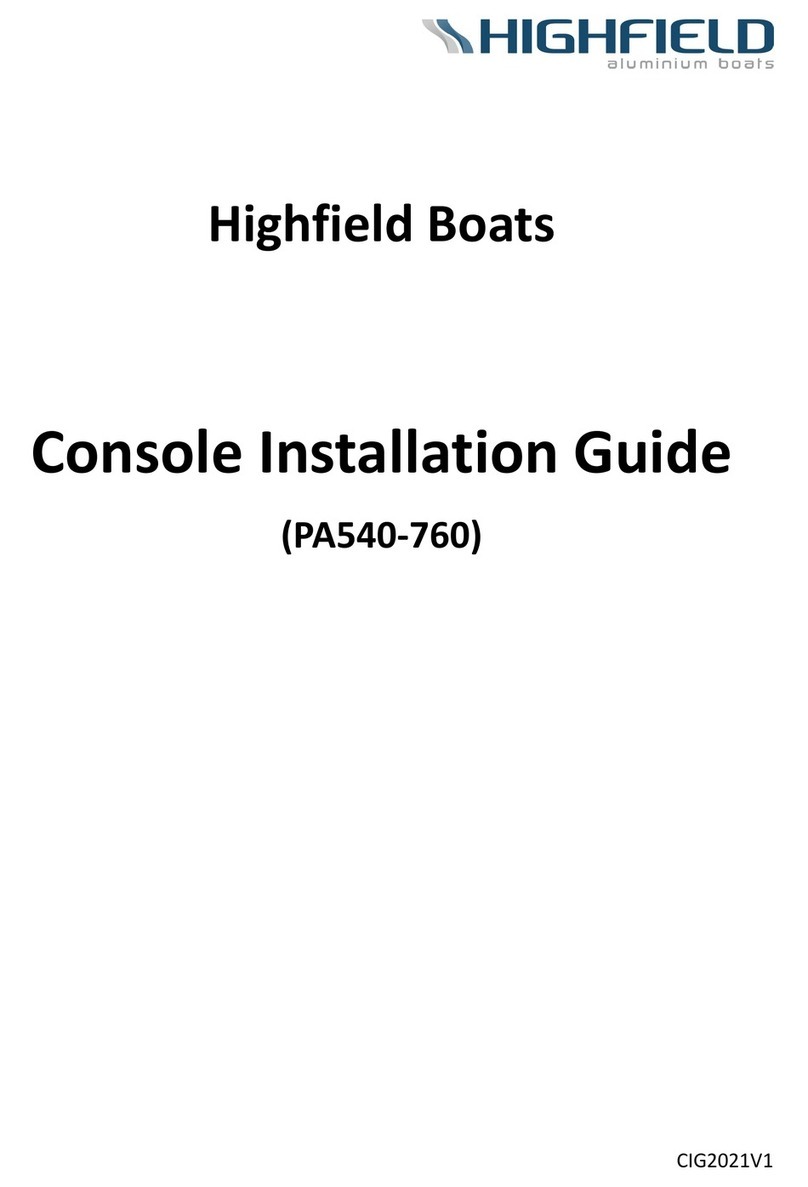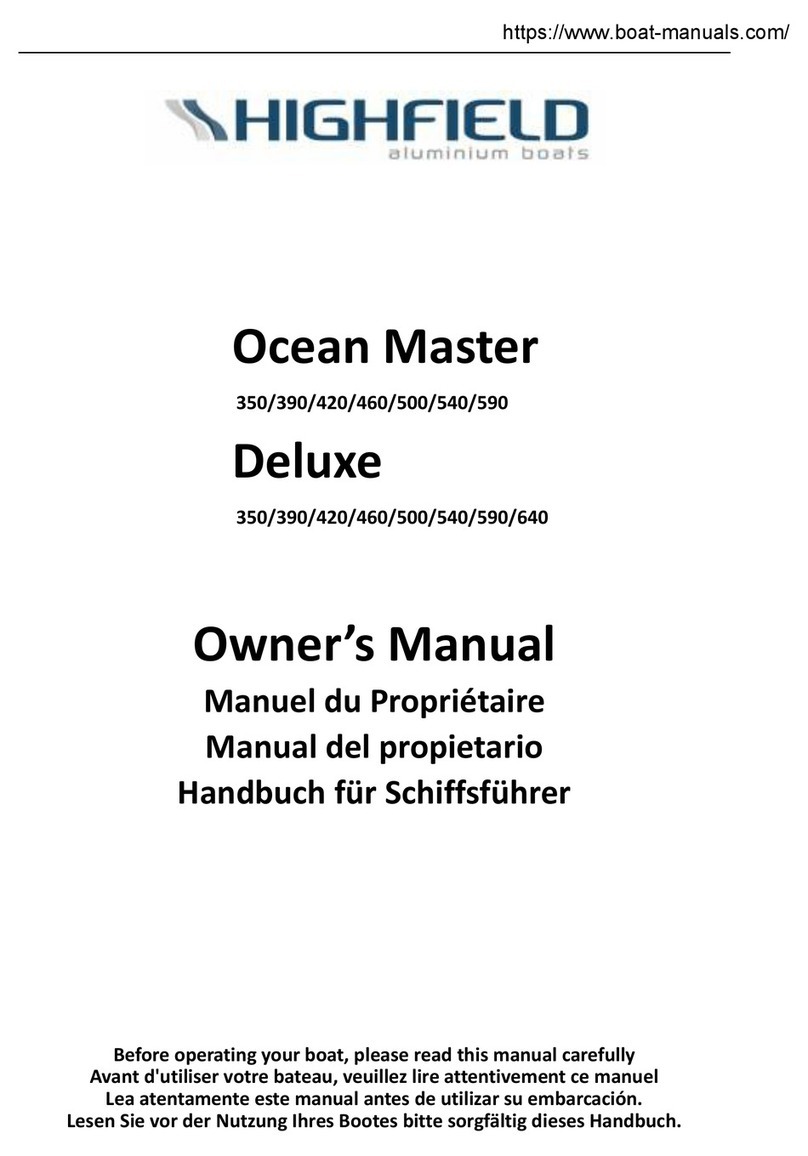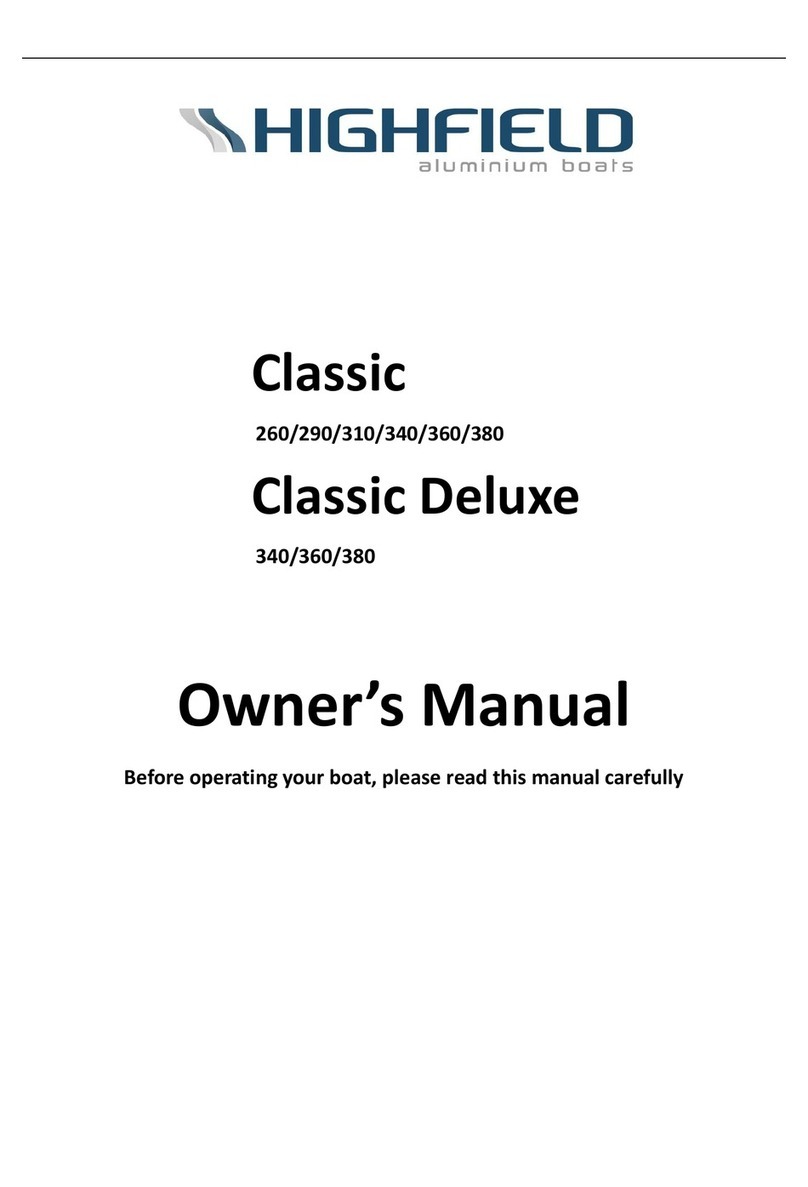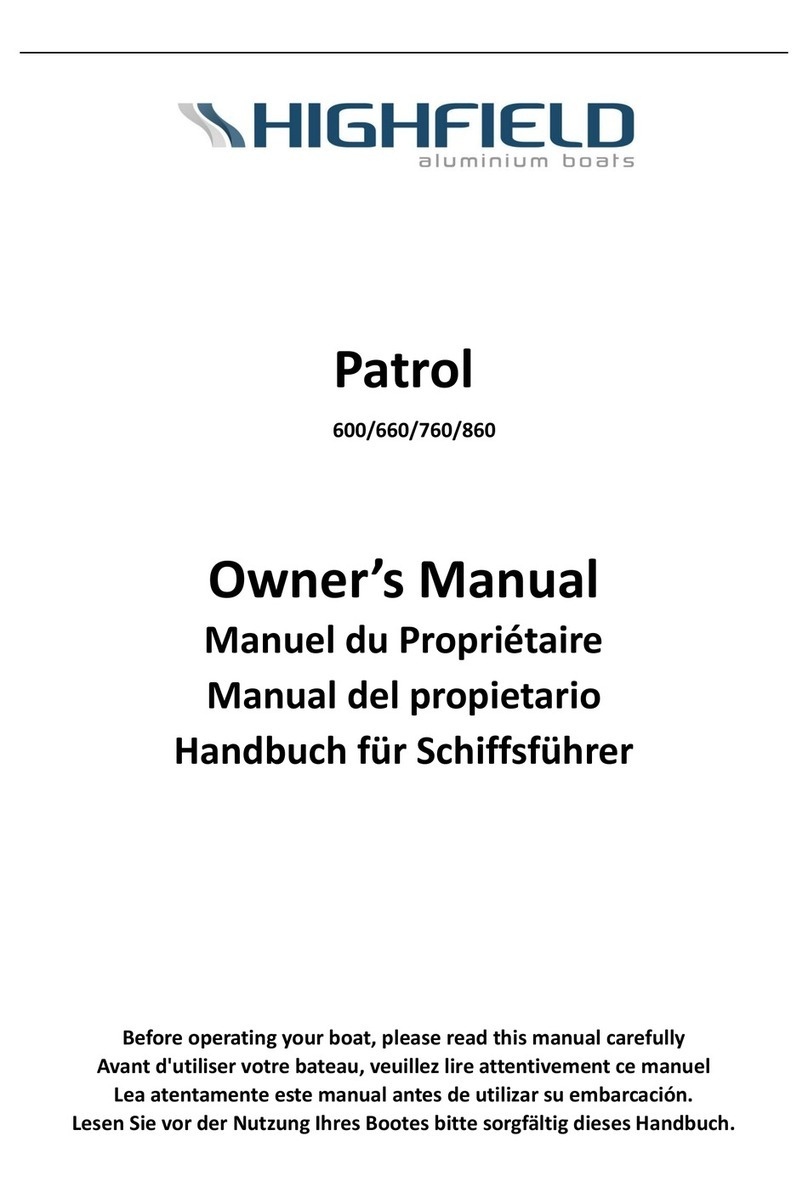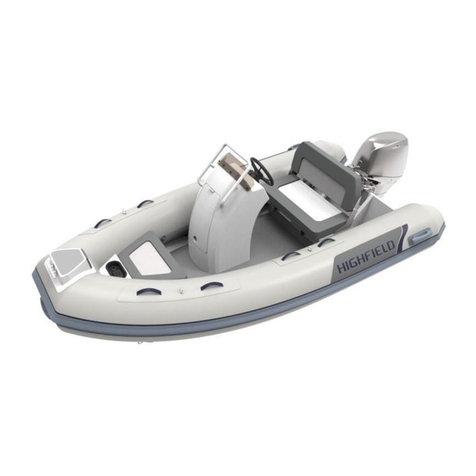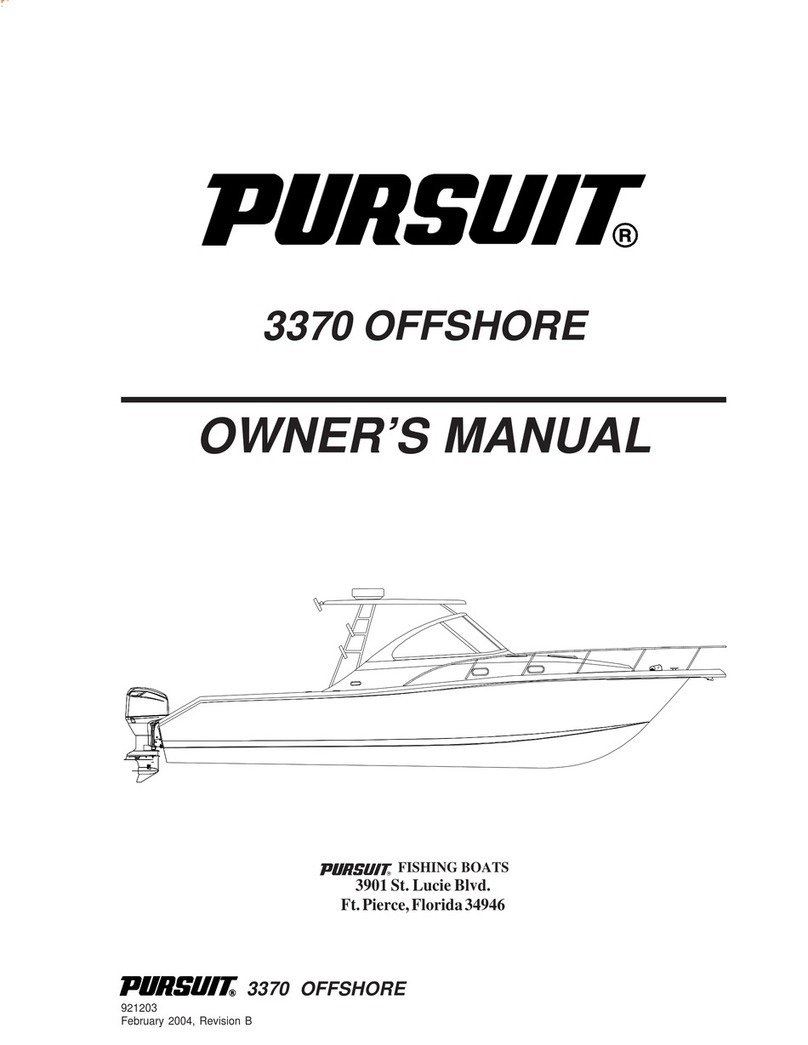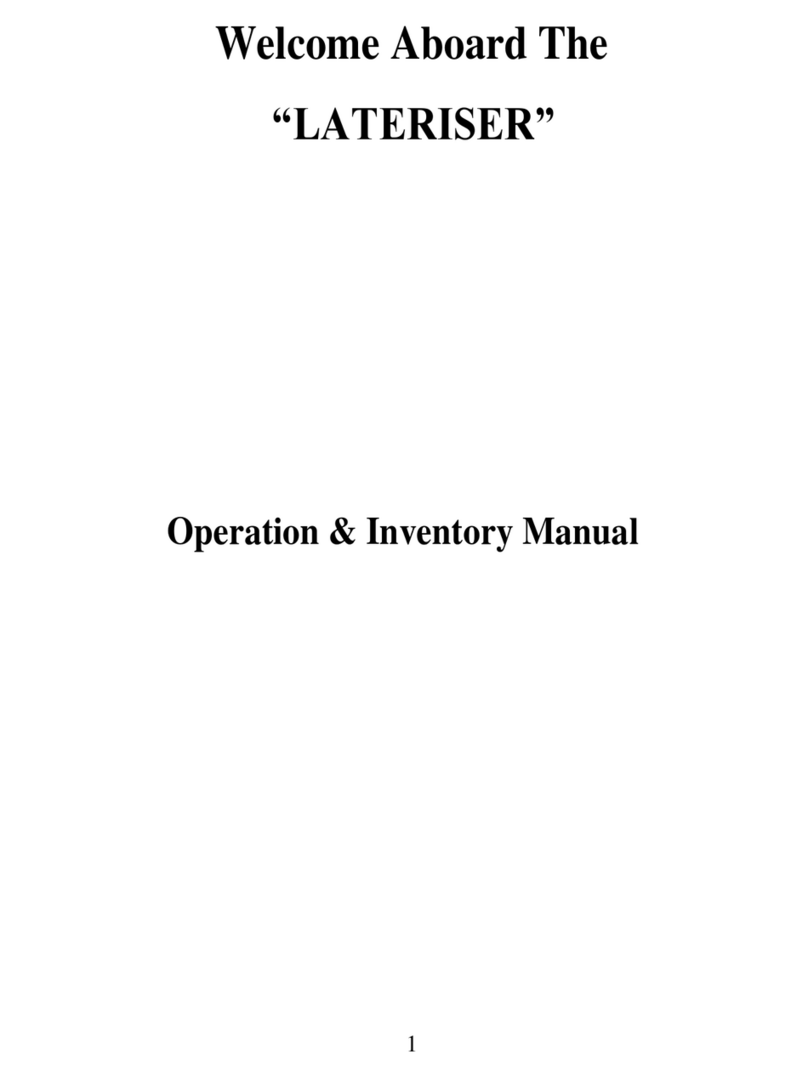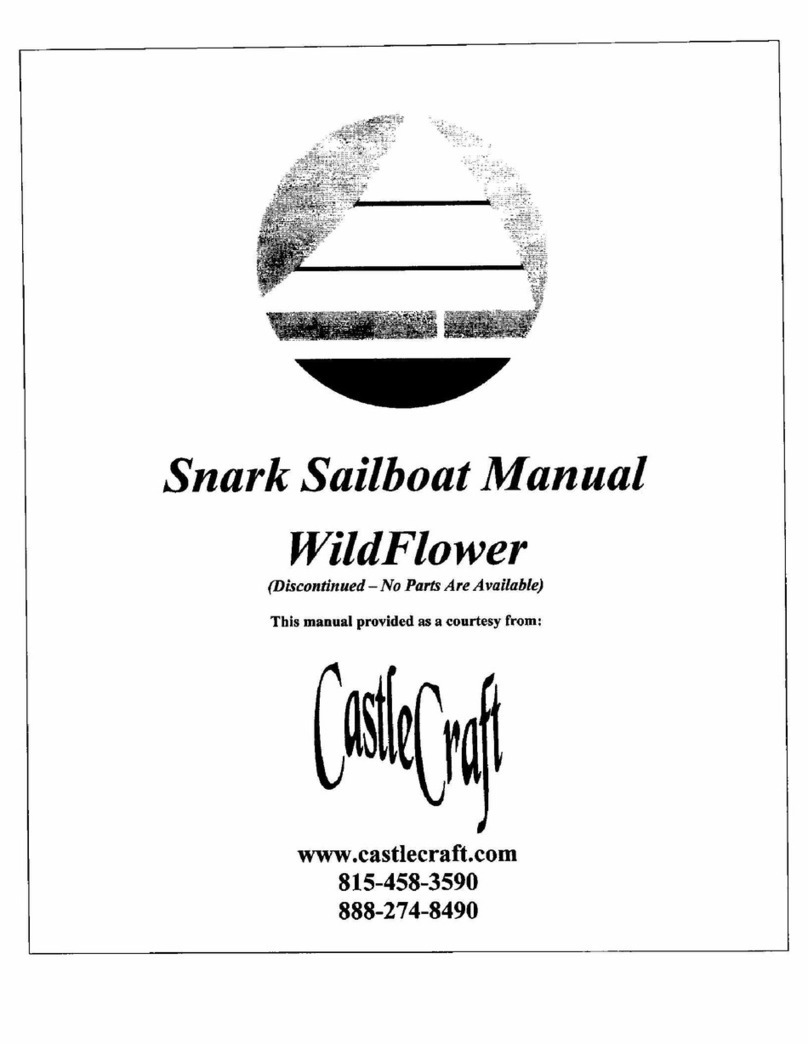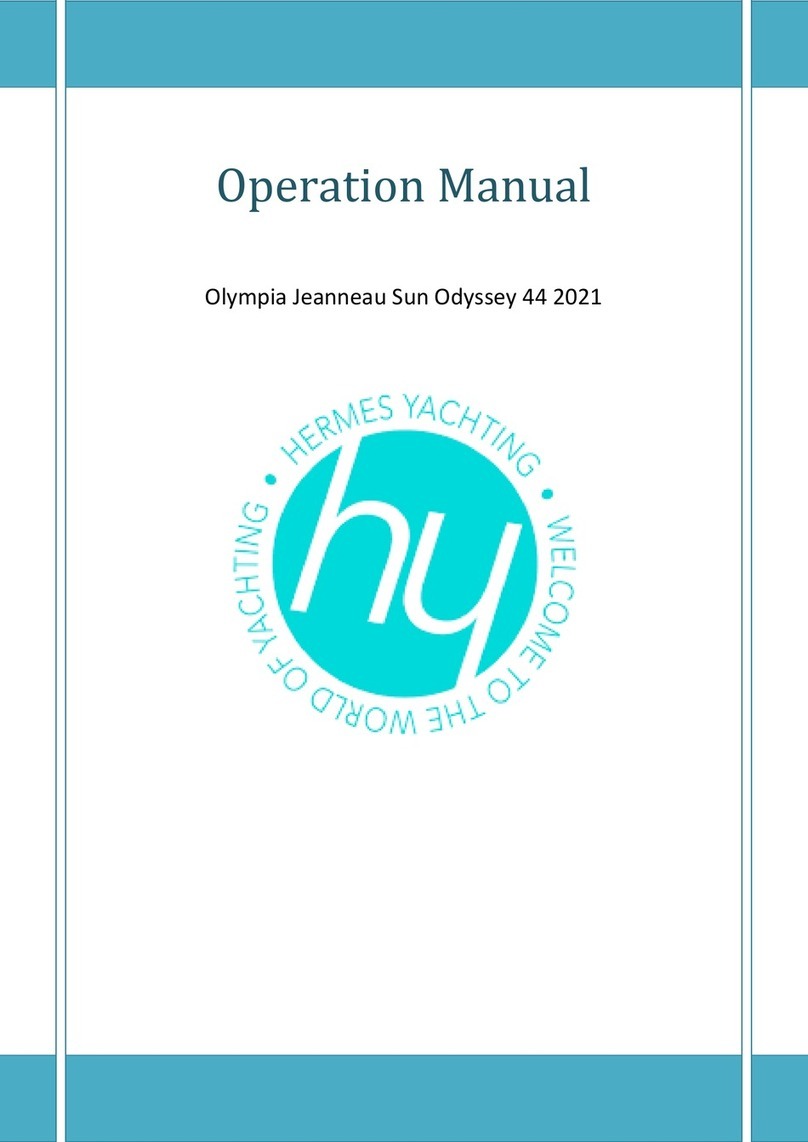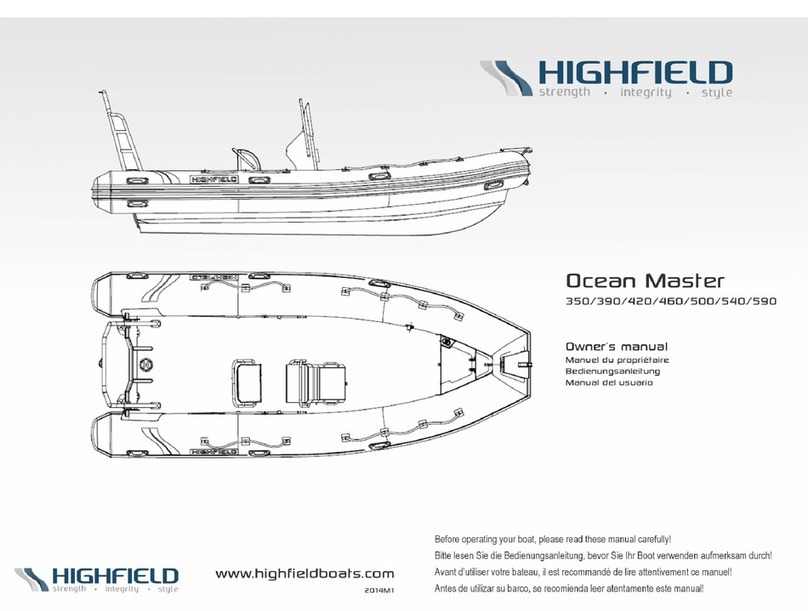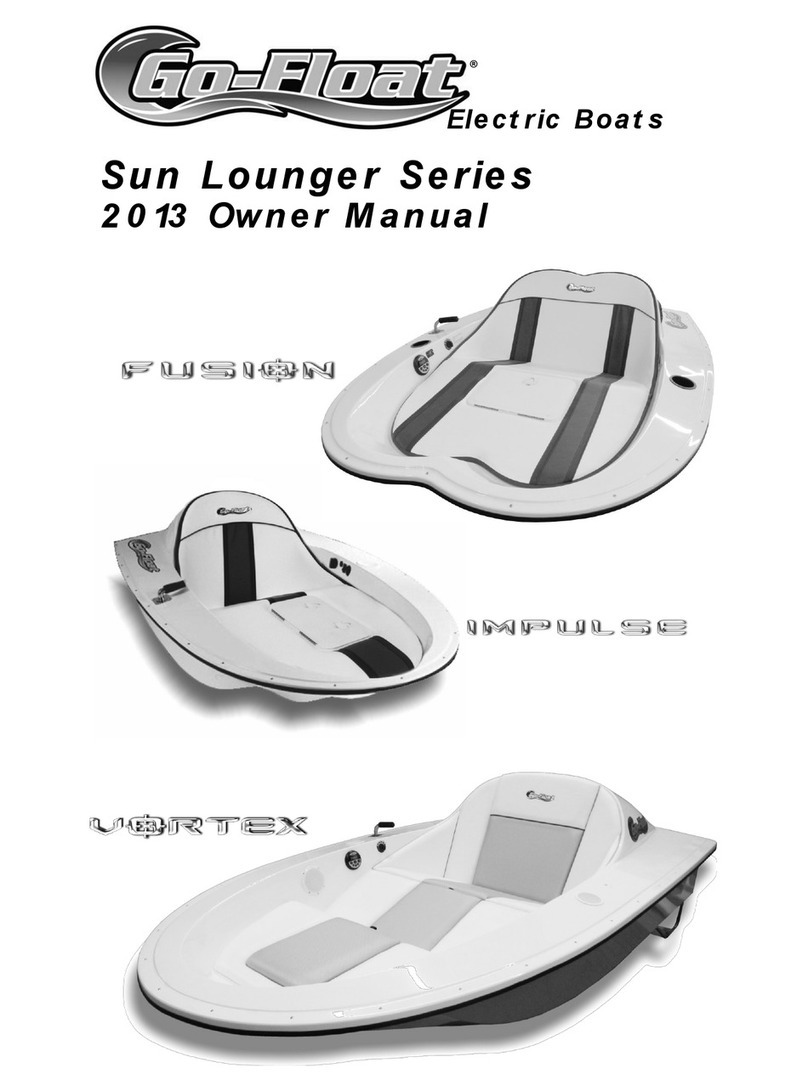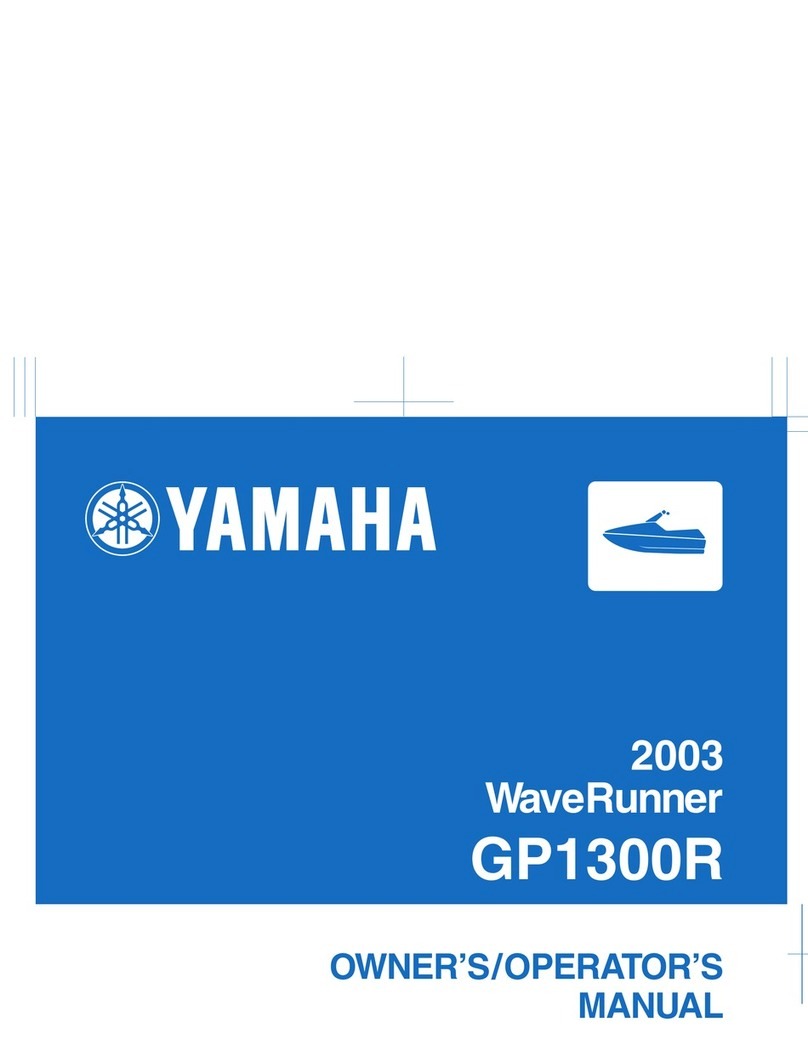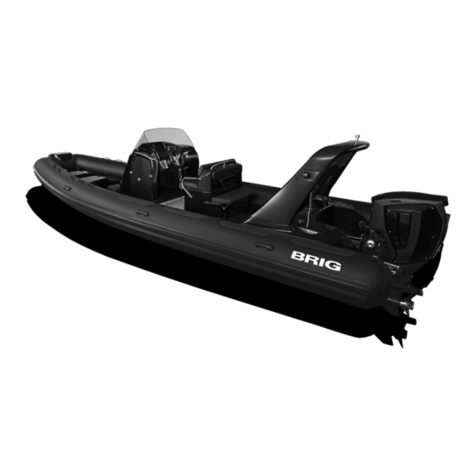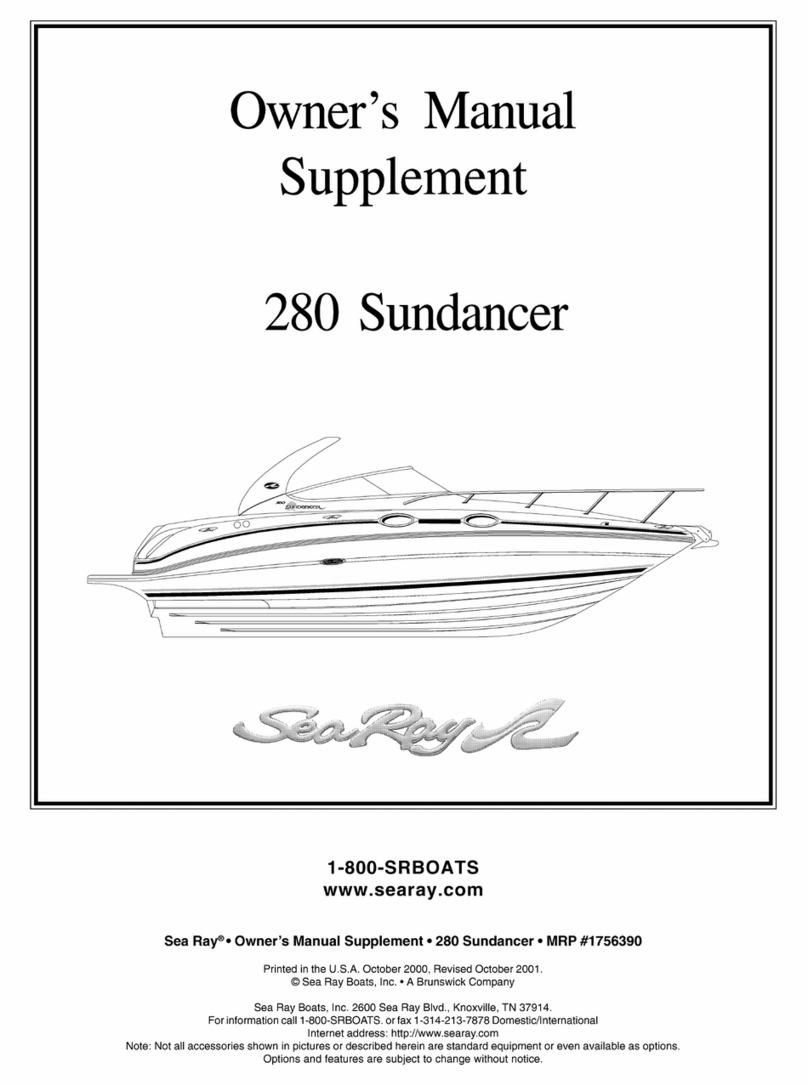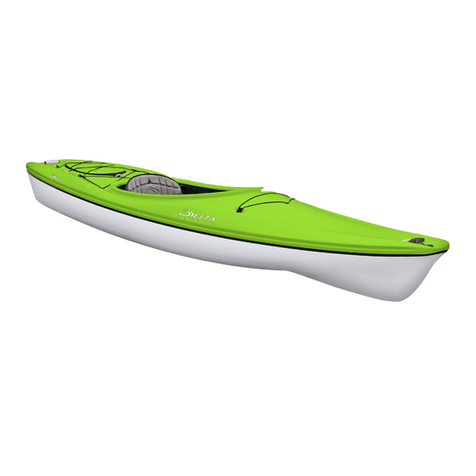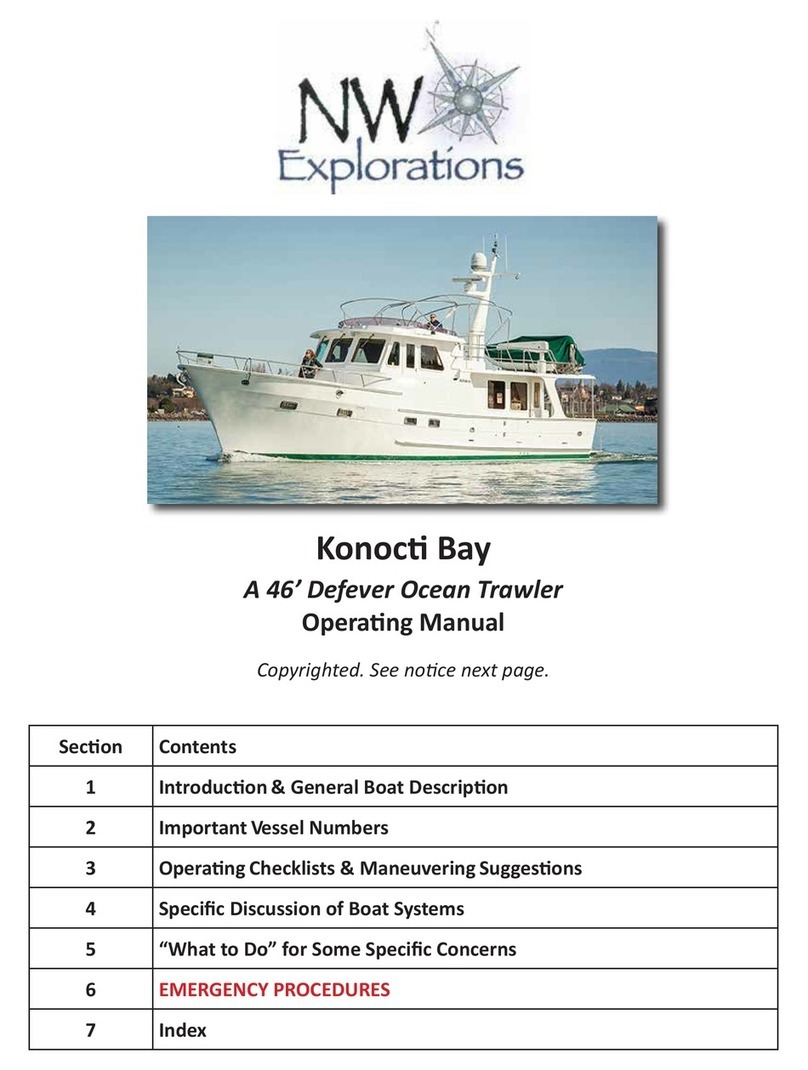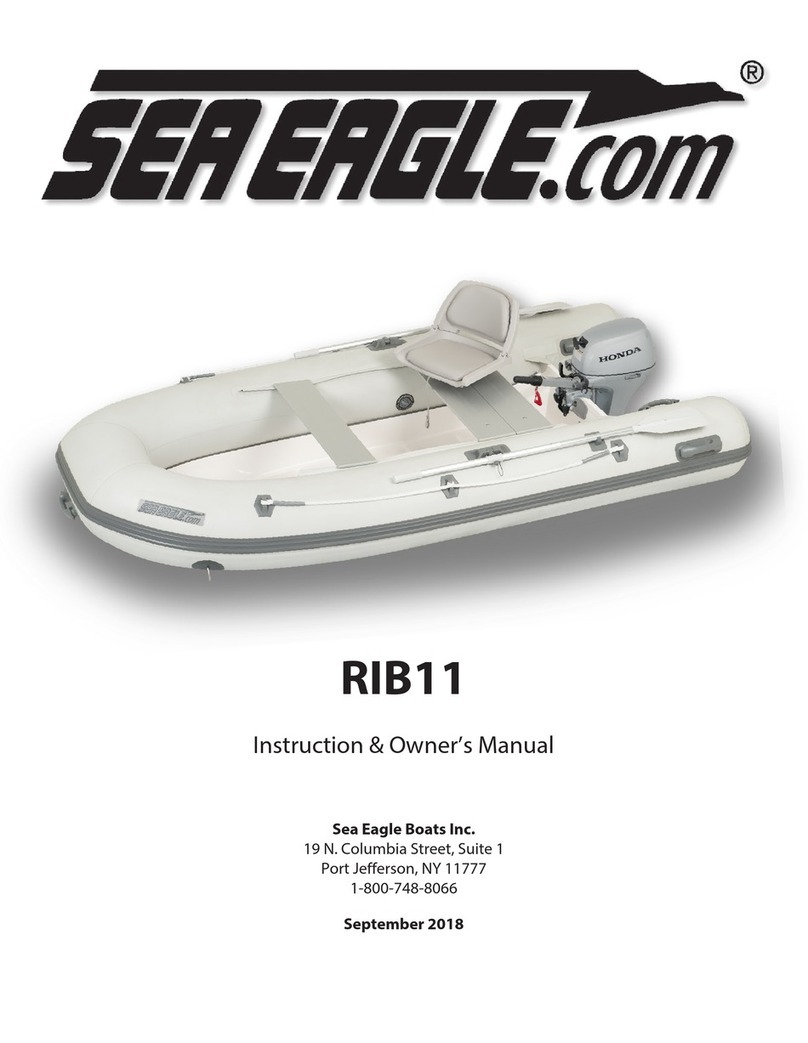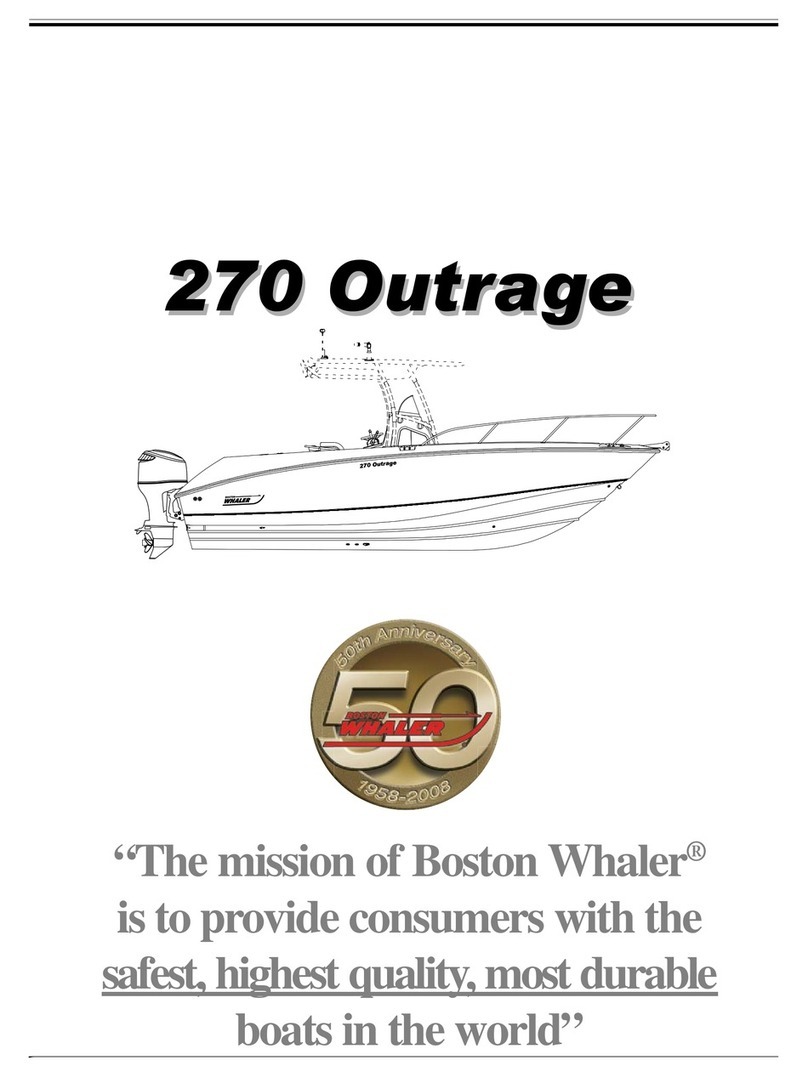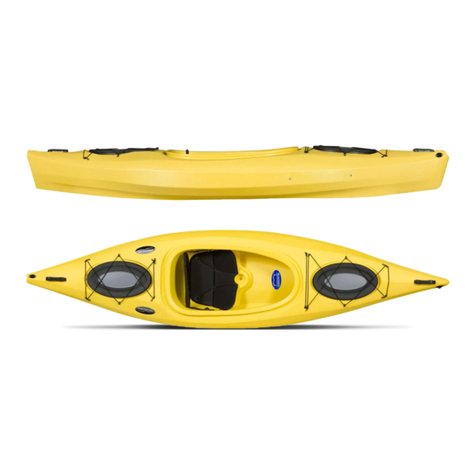3www.highfieldboats.com 4
www.highfieldboats.com
Danger
Denotes that an extreme intrinsic hazard exists which would result in high probability of
death or irreparable injury if proper precautions are not taken.
Warning
Denotes that a hazard exists which can result in injury or death if proper precautions
are not taken.
Warranty Information
HIGHFIELD BOATS – RETAIL LIMITED WARRANTY
WHAT IS COVERED
Highfield boats are warranted to be free of defects in material and workmanship during the period described
hereafter:
DURATION OF COVERAGE
The entire vessel is covered for a period of two (2) years from the date the product is sold.
The structural hull of the vessel is covered by a five (5) year warranty.
CONDITIONS THAT MUST BE MET IN ORDER TO OBTAIN WARRANTY COVERAGE
Warranty coverage is available only to customers that purchase from an authorized Highfield dealer. Routine
maintenance outlined in the Owner’s manual must be performed in a timely manner in order to maintain
warranty coverage. If the retail customer performs this maintenance, Highfield Boats reserves the right to
make future warranty coverage contingent on proof of proper maintenance.
WHAT HIGHFIELD BOATS WILL DO
Highfield Boats sole exclusive obligation under this warranty is limited to, at our option, repairing a defective
part, replacing such part or refunding the purchase price of the Highfield Boats product. The repair,
replacement of parts, or the performance of service under this warranty does not extend the life of this
warranty beyond its original expiration date.
HOW TO OBTAIN WARRANTY COVERAGE
The customer must provide Highfield Boats with a reasonable opportunity to repair, and reasonable access to
the product for warranty service. Warranty claims shall be made by delivering the product for inspection to a
Highfield Boats dealer authorized to service the product. If the service provided is not covered by this
warranty, purchaser shall pay for all related labor and material, and any other expenses associated with that
service. Purchaser shall not, unless requested by Highfield Boats, ship the product or parts of the product
directly to Highfield Boats. Proof of registered ownership must be presented to the dealerat the time warranty
service is requested in order to obtain coverage Highfield Boats. Proof of registered ownership must be
presented to the dealer at the time warranty service is requested in order to obtain coverage.
WARRANTY EXTENSION
Warranty extension becomes available upon proper registration of the product by the owner via Highfield
Boats warranty website: http://warranty.highfieldboats.com Product must be registered within sixty (60) days
from the date the product is purchased.
Warranty extension covers the ability of the tube hold air to ISO 6185 (airtightness test).
Duration of the coverage:
Tube made of ORCA® (Hypalon) fabric: ten (10) years
Tube made of Valmex® (PVC) fabric: five (5) years
Warranty extension does not apply if the vessel is used for rental or commercial use.
WHAT IS NOT COVERED
This limited warranty does not include damage due to misuse, abuse, negligence, improper or inadequate
storage or transportation, or to any Highfield boat which is used in a manner contrary to directions or
instructions indicated in the Highfield Owner’s Manual.
The warranty does not cover routine maintenance items, adjustments, normal wear and tear, puncture,
discoloration, oxidation, abrasion, mildew or damages due to theft, loss, modification or alteration.
Wearing parts including but not limited to rubbing strake, keel guards, ropes are not covered by the warranty.
This warranty shall be ineffective if the boat has been operated without proper inflation, or with an outboard
motor which exceeds the maximum horsepower rating listed on the serial plate attached to the transom.
Powder coating condition is not covered by our warranty due to the specific exposed nature of the product.
For best long term protection, ensure that all surfaces are rinsed with fresh water after every use and are
cleaned immediately of any substances that may stick to the paint surface and cause discoloration or
damage. We recommend scratches and dents to be repaired to avoid blistering or detachment of the coating
from the hull.
Use of the product for racing or other competitive activity voids the retail warranty.
Expenses related to haul-out, launch, towing, storage, transportation, telephone, rental, inconvenience, slip
fees, insurance coverage, loan payments, loss of time, loss of income, or any other type of incidental or
consequential damages are not covered by this warranty.
TRANSFER OF WARRANTY
The limited warranty is transferable to a subsequent purchaser, but only for the remainder of the unused
portion of the limited warranty. This does not apply if the vessel is used for rental or commercial use.
To
transfer
warranty
please
send
an
email
with
the
below
information
to
[email protected] - Copy of the sale agreement
- HIN number of the craft
- Name, address, email address of new owner
Safety alerts
This manual uses the following safety alerts to draw your attention to special safety instructions that should
be followed.
Degree of hazard and corresponding safety labels:








